
Roots
The quiet of evening descends, bringing with it a subtle shift in our relationship with our coils. It is a time when the day’s elements release their hold, and a different kind of tending begins. This transition from active styling to restful protection is not a modern invention; it echoes through generations, a silent understanding passed down through familial lines. For textured hair, especially those wondrous coils, the nighttime hours have always held a particular weight, a period for deep care and restoration.
The wisdom guiding these nightly practices stems from a profound connection to hair as more than mere adornment. It represents lineage, identity, and a conduit for spiritual connection.
Consider the earliest expressions of hair care, long before the advent of commercial products or scientific classifications. In ancient African societies, hair was a powerful symbol, conveying marital status, age, social standing, and even tribal affiliation. Hairstyles were not arbitrary; they were deliberate statements, often requiring extensive time and skill to construct. Such intricate styles, sometimes taking days to complete, naturally necessitated methods for preservation.
To maintain their integrity, and indeed, their symbolic weight, protective measures during sleep became a common practice. This foundational layer of ancestral knowledge forms the bedrock of modern nighttime care for coils.

Hair’s Structure and Its Ancestral Connection
The unique architecture of coiled hair plays a central role in its care. Unlike straight strands, which allow natural scalp oils, known as sebum, to easily travel down the hair shaft, coils present a beautiful, yet challenging, pathway. Each bend and curve in a coil creates points where sebum struggles to descend, leaving the ends of the hair prone to dryness. This inherent dryness makes coiled hair more susceptible to breakage and damage from friction.
Ancestral practices, developed through keen observation and generations of trial, intuitively addressed this vulnerability. They recognized the need to shield these delicate structures from the harsh realities of daily life and the abrasive forces of sleep.
Ancestral wisdom teaches us that nighttime hair care for coils is a continuation of daily reverence for hair’s unique nature and cultural significance.
The very act of protecting hair at night, whether through simple wraps or more elaborate coverings, speaks to a deep, inherited understanding of hair’s fragility and its need for careful tending. This understanding was not born from scientific laboratories, but from lived experience, passed down through the hands of mothers, aunts, and community elders.
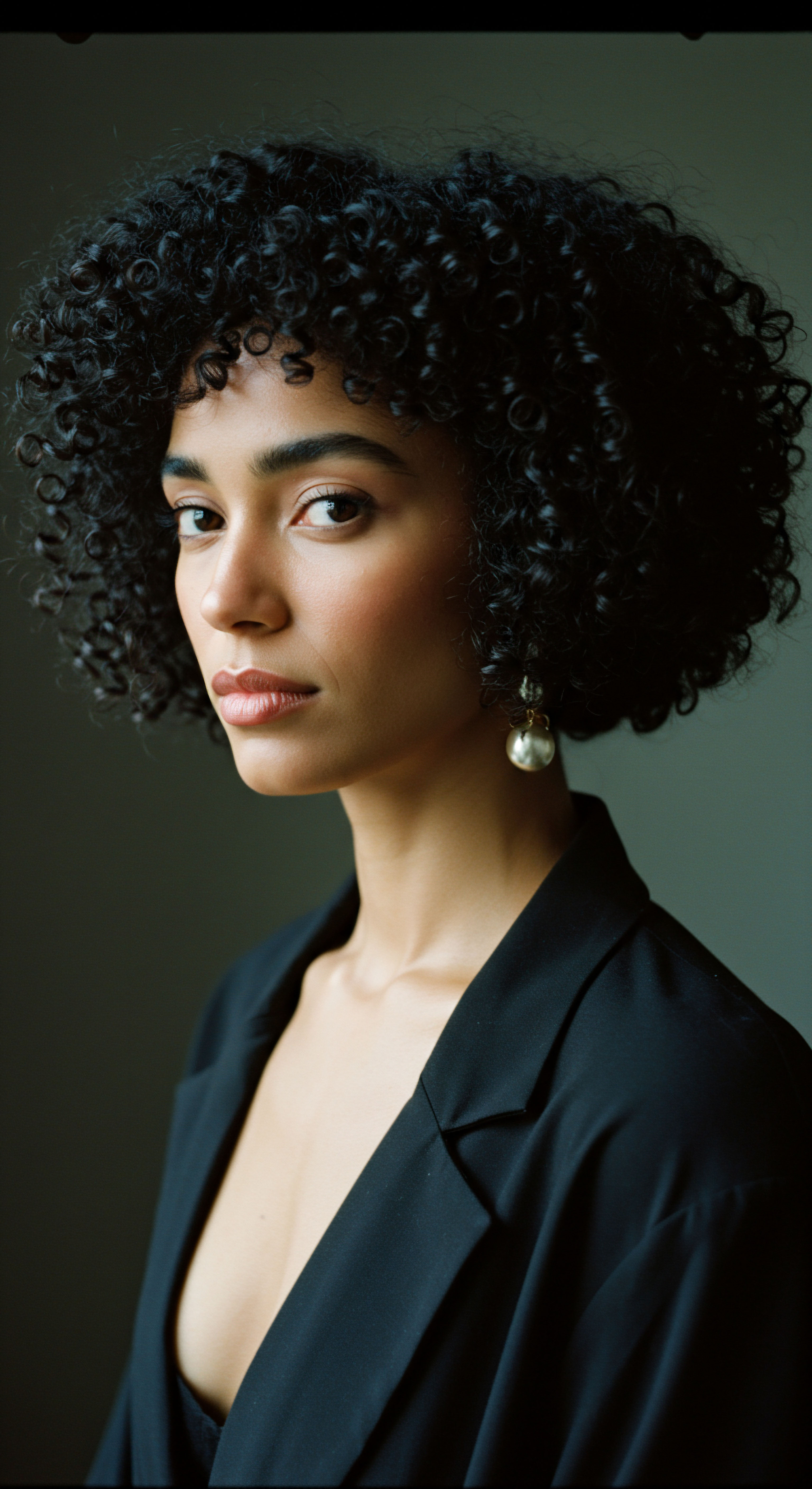
Early Hair Protection Methods
From the earliest times, various methods were employed to safeguard hair during periods of rest. Head coverings, crafted from readily available materials, served multiple purposes. They offered defense against environmental elements like sun and dust, and later, during periods of immense hardship, became a means of maintaining hygiene and resisting oppressive forces.
In West African cultures, for example, headwraps, known by names such as “gele” in Yoruba tradition or “duku” in Ghana, were worn with purpose and style. These coverings were not merely decorative; they functioned as practical shields. The practice migrated with African people across the diaspora, transforming and adapting while retaining its core purpose of preservation and cultural expression.
Consider the following table outlining traditional hair protection materials:
| Material Plant Fibers |
| Common Origins Various African regions |
| Primary Purpose Basic coverage, warmth, protection from elements |
| Material Woven Cloth |
| Common Origins West Africa, North Africa |
| Primary Purpose Cultural expression, hygiene, style preservation |
| Material Smooth Fabrics |
| Common Origins Across diaspora (silk, satin later) |
| Primary Purpose Reduced friction, moisture retention (intuitive understanding) |
| Material These materials highlight a consistent drive to protect hair from external damage. |
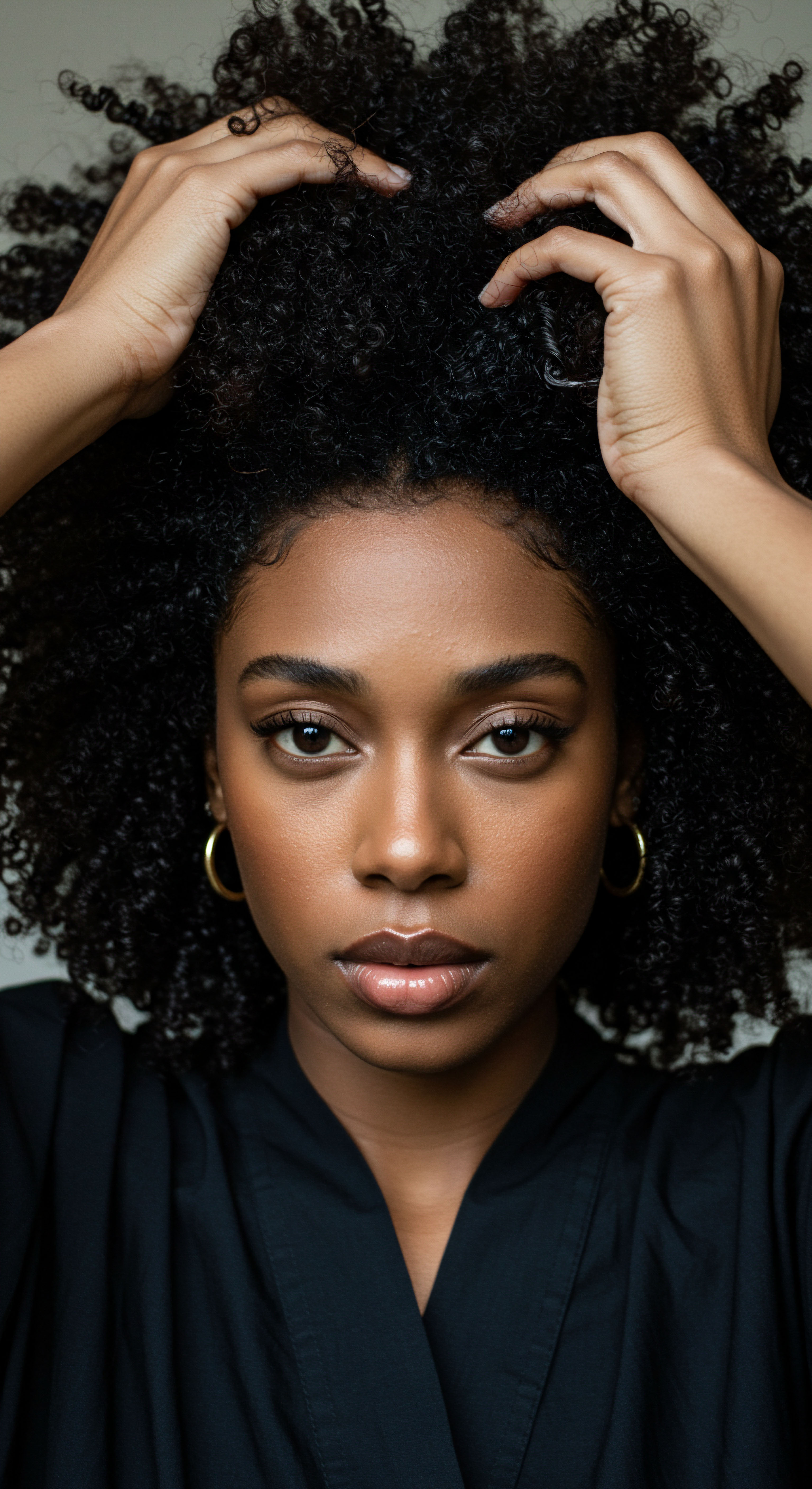
What Does the Structure of Coiled Hair Reveal About Its Needs?
The intricate helical shape of coiled hair, arising from an elliptical hair follicle, means that natural oils from the scalp do not easily travel down the hair shaft. This structural reality leaves coiled strands more prone to dryness and, subsequently, to breakage. When strands rub against rough surfaces, like cotton pillowcases, the friction can cause the cuticle, the hair’s outer protective layer, to lift.
This lifted cuticle allows precious moisture to escape, leading to frizz and further damage. The nightly ritual of protecting coils addresses this fundamental vulnerability, creating an environment where moisture is conserved and friction is minimized.
Early knowledge, though not articulated in scientific terms, understood that a covered head during rest could prevent tangles and keep hair tidy for the next day. This practical application of care, honed over centuries, laid the groundwork for our contemporary understanding of moisture retention and friction reduction in nighttime hair care. The wisdom of our ancestors recognized that a peaceful night for the body also meant a peaceful night for the hair.
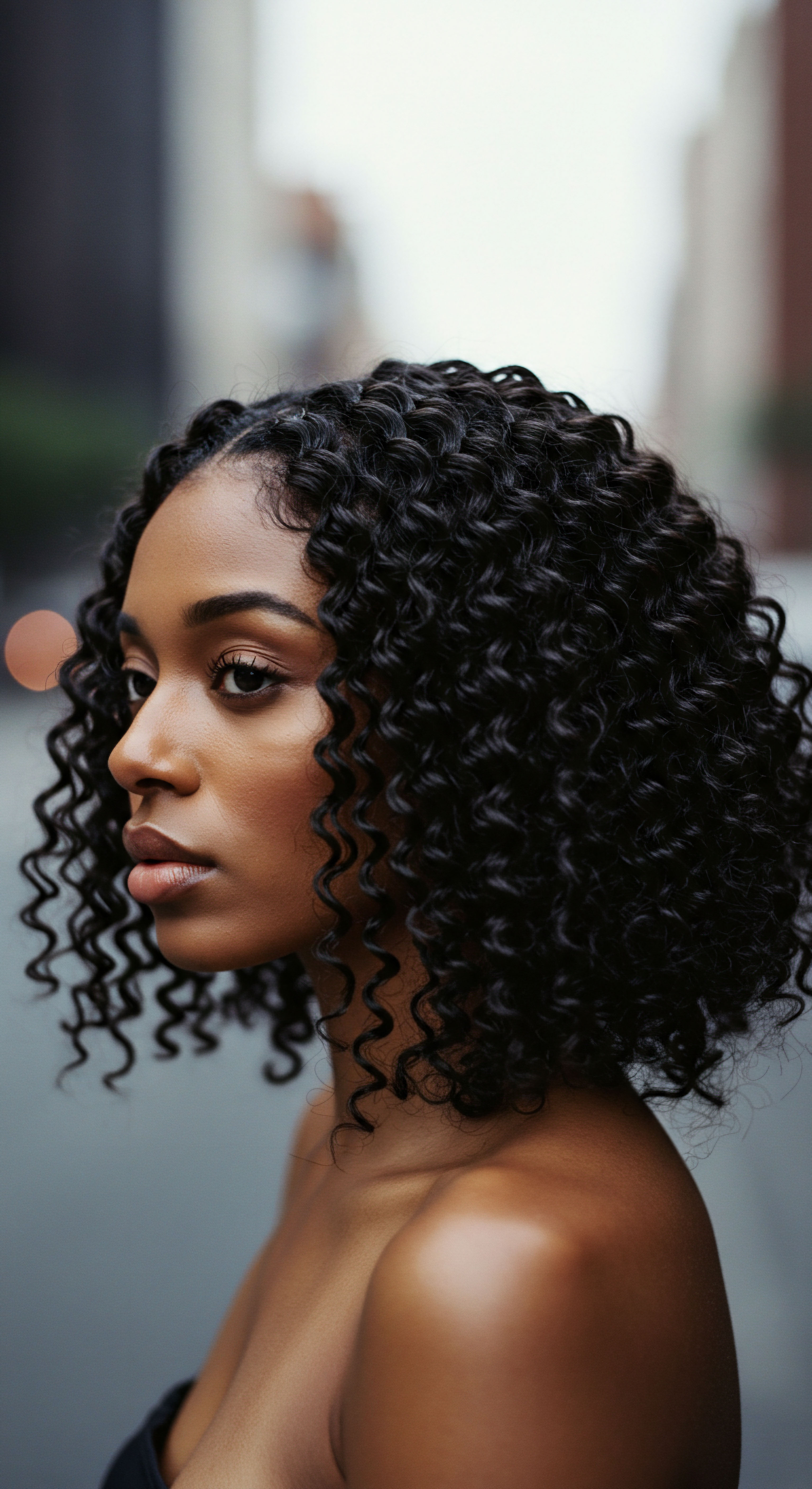
Ritual
As daylight fades and the world quiets, a subtle invitation arises ❉ to engage in the gentle, purposeful practices that safeguard our coils through the night. This transition from the active day to restful evening is a space where practical wisdom finds its deepest expression. It is a time for mindful attention, where simple actions become a powerful means of preserving the beauty and vitality of our hair.
This section delves into the daily or periodic practices that shape our experience of nighttime care, exploring techniques and methods with gentle guidance. We move from the foundational understanding of hair’s nature to the tangible ways we can honor its needs each evening.

The Nightly Shield for Coils
The most enduring aspect of ancestral nighttime hair care, carried into modern routines, involves creating a protective barrier for the hair. This shield, most commonly a head covering, serves to reduce friction and retain moisture. Cotton pillowcases, ubiquitous in many homes, can be quite abrasive to delicate coiled strands, acting like tiny sponges that absorb natural oils and hydration. This friction can lead to tangles, breakage, and a diminished appearance by morning.
A dedicated nighttime hair routine is a quiet act of self-care, preserving the health and vibrancy of coils through the hours of sleep.
Ancestors intuitively understood that a smooth surface would be kinder to hair. While the specific materials might have changed over time, the underlying concept of minimizing abrasion remains constant. Today, this wisdom manifests in the widespread recommendation of satin or silk coverings. These materials, with their smooth surfaces, allow hair to glide rather than snag, preserving its integrity.

Selecting Your Nighttime Covering
The choice of a nighttime covering is a personal one, yet informed by shared principles of hair protection.
- Bonnets ❉ These offer comprehensive coverage for the entire head, keeping all coils contained and protected. They are particularly useful for maintaining styles and reducing manipulation.
- Scarves ❉ Versatile and adaptable, scarves can be tied in various ways to secure hair, offering flexibility for different lengths and styles. They too, when made of silk or satin, provide the necessary smooth surface.
- Pillowcases ❉ For those who prefer not to cover their hair directly, a satin or silk pillowcase serves as an excellent alternative, providing a low-friction surface for the hair to rest upon.
The historical precedent for head coverings is undeniable. From the headwraps worn for practical protection and cultural expression in Africa and the diaspora, to their reclamation as symbols of pride, the act of covering one’s hair at night is a continuation of a long-standing practice.

Beyond the Cover How to Prepare Coils for Rest?
Nighttime preparation for coils extends beyond simply covering them. It involves a sequence of steps designed to infuse and seal moisture, preventing the dehydration that can occur overnight. Coiled hair, by its very nature, is prone to dryness because the scalp’s natural oils struggle to travel down the spiral strands. This makes intentional moisturizing a non-negotiable step in a healthy routine.
The concept of “sealing” moisture, often practiced today with a combination of liquid, oil, and cream (LOC or LCO method), finds its roots in ancestral practices that utilized natural butters and oils from the earth. Ingredients like shea butter, coconut oil, and various indigenous oils were applied to hair not just for shine, but to create a barrier that held hydration within the strands.

Nighttime Styling Techniques
Certain styling techniques are particularly beneficial for coils overnight, reducing tangles and preserving curl definition.
- Pineappling ❉ This method involves gathering all hair loosely at the very top of the head, securing it with a soft scrunchie or scarf. This keeps curls elevated, preventing them from being crushed or flattened by sleep.
- Loose Braids or Twists ❉ Dividing hair into a few large, loose braids or twists before bed can prevent tangling and stretch coils slightly, which can help reduce shrinkage while preserving curl patterns.
- Banding ❉ Using soft hair ties along the length of a section of hair can gently stretch coils, reducing shrinkage without applying heat.
These methods are echoes of older traditions where hair was carefully manipulated and secured to ensure its presentation the following day. The underlying principle remains the same ❉ minimal manipulation and maximum protection.
While the exact products and tools have evolved, the underlying wisdom of preparation remains steadfast. A gentle touch, a focus on moisture, and a commitment to protecting the hair from mechanical stress are all principles that have transcended time, guiding modern nighttime hair care for coils with quiet authority.

Relay
The journey of nighttime hair care for coils extends far beyond simple routine; it is a profound intersection of historical continuity, scientific insight, and personal identity. To truly grasp its contemporary significance, we must consider the deeper currents that connect ancient wisdom with modern understanding. This section delves into the intricate interplay of biological, psychological, social, and cultural factors that shape how we approach evening care for our hair, drawing upon research and data to illuminate these connections.

Why Does Coiled Hair Demand Such Specific Nighttime Care?
The unique structural characteristics of coiled hair are a primary driver behind the necessity for dedicated nighttime attention. Unlike straight or wavy hair, coiled strands possess an elliptical cross-section and numerous bends along their length. These structural features mean that the cuticle, the outermost protective layer of the hair, often lies less flat. This can make coiled hair more prone to moisture loss and more susceptible to mechanical damage from friction.
During sleep, when hair rubs against surfaces like pillowcases, this friction can exacerbate cuticle lifting, leading to increased dryness, tangles, and ultimately, breakage. The deliberate act of covering hair at night with smooth materials like silk or satin directly counters these inherent vulnerabilities. This practice, intuitively understood by generations, now finds strong backing in scientific observation.

The Science of Overnight Hair Protection
Research has begun to quantify the benefits long recognized by ancestral practices. For instance, clinical testing demonstrates that Silk Bonnets reduce hair breakage by up to 43% compared to cotton head coverings over an 8-week testing period. This significant reduction stems from silk’s natural smoothness, which minimizes friction between hair strands and between hair and fabric. This protective quality is particularly valuable for coiled hair, which is inherently more delicate at its bends and susceptible to damage.
Moreover, studies show that silk bonnets can reduce transepidermal water loss from the hair shaft by 22% compared to sleeping without protection. This scientific finding validates the ancestral understanding that certain coverings could help hair retain its vital moisture through the night, a critical factor for preventing dryness and brittleness in coiled textures.
The practice of applying oils and butters before bed, a custom dating back centuries, also aligns with scientific principles of moisture retention. These emollients act as occlusive agents, creating a barrier on the hair shaft that slows water evaporation. This dual action of physical protection and moisture sealing creates an optimal environment for hair health during sleep.
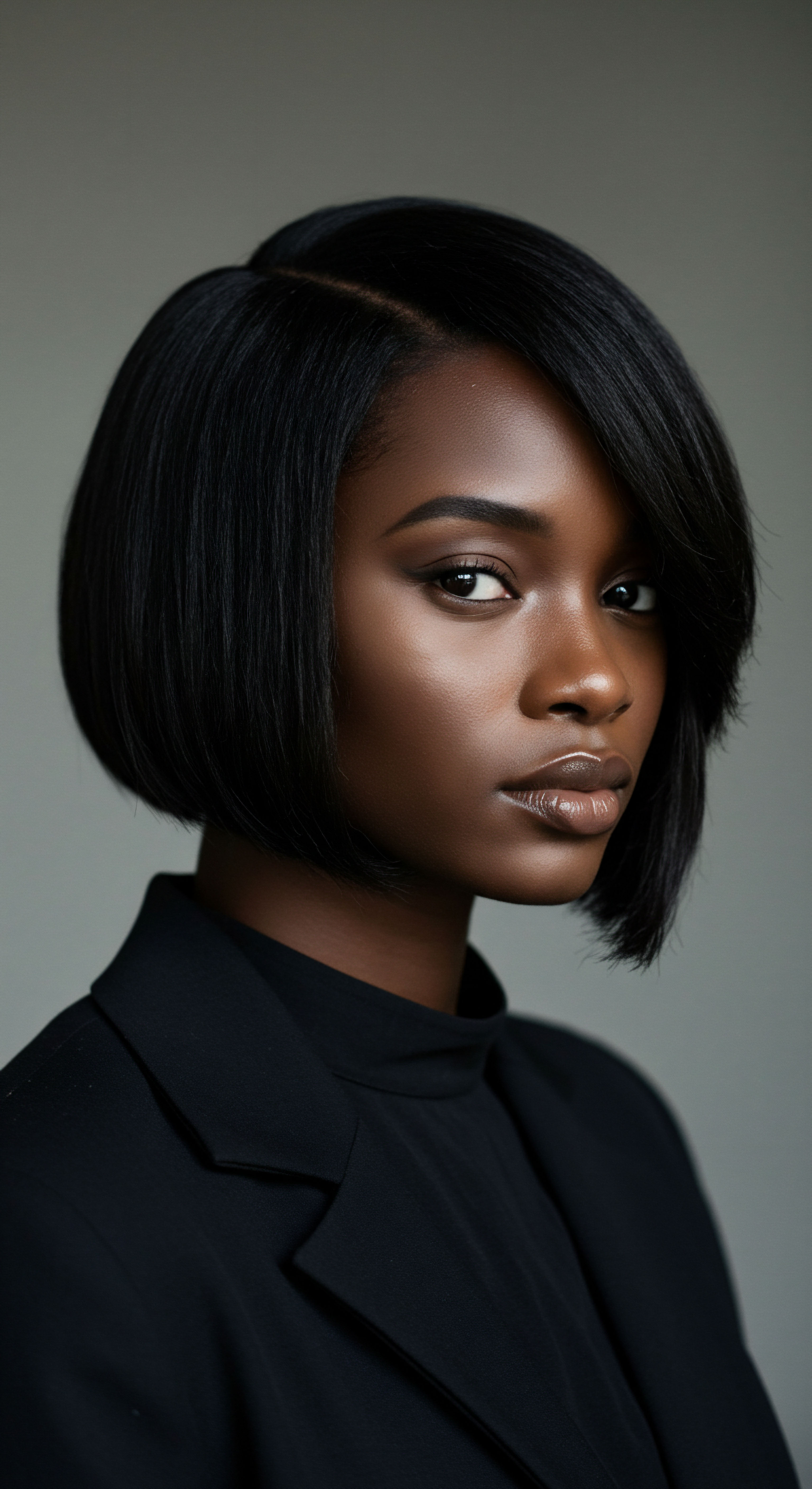
How Do Cultural Continuities Inform Modern Nighttime Care?
The nighttime care for coils is not simply a matter of biology; it is deeply interwoven with cultural memory and identity. Head coverings, now used for overnight hair preservation, carry a rich history that spans continents and centuries. In many African cultures, headwraps symbolized social standing, marital status, or spiritual adherence.
During the transatlantic slave trade and its aftermath, head coverings took on a dual meaning in the diaspora. While sometimes enforced as a mark of subjugation, African women transformed them into symbols of resistance, dignity, and beauty. They used luxurious fabrics and intricate styles to assert their identity, even when facing oppression. This resilience and adaptability of practice speak volumes about the enduring spirit behind these customs.
The historical use of head coverings for coiled hair, from protection to defiance, grounds modern nighttime care in a profound cultural legacy.
The act of protecting coils at night, therefore, is not merely a cosmetic routine; it is a quiet, personal reaffirmation of heritage. It connects individuals to a long line of ancestors who understood the significance of hair and devised ingenious ways to preserve it, often under challenging circumstances. This continuity of practice reinforces cultural pride and serves as a tangible link to a shared past.
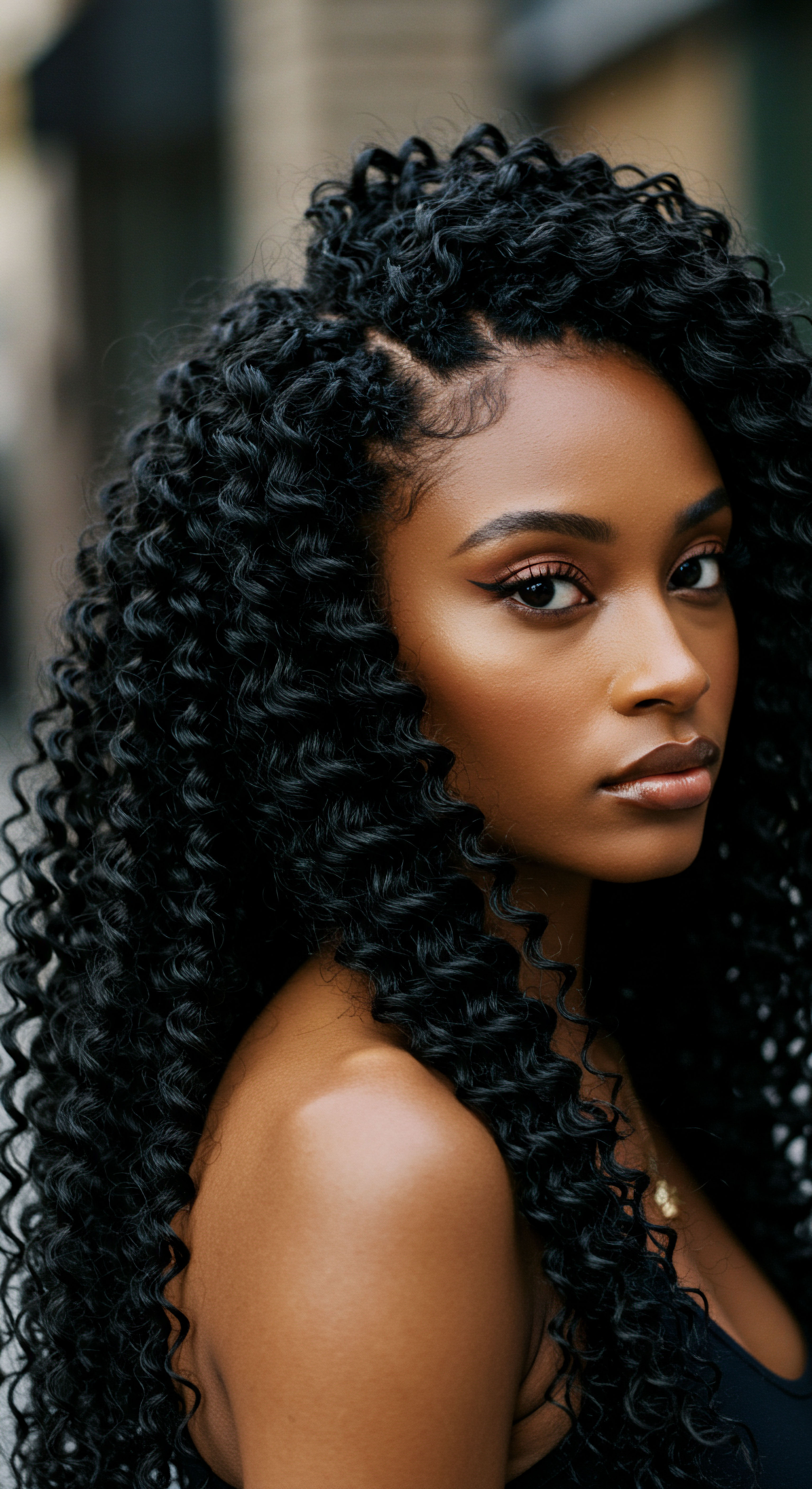
Beyond Protection ❉ The Role of Scalp Health and Sleep
Ancestral wisdom also recognized the importance of a healthy scalp, often incorporating massages with natural oils and herbs. This practice, carried into modern routines, promotes blood circulation to the scalp, which is beneficial for hair growth and overall scalp well-being. Modern trichology confirms the importance of a balanced scalp microbiome for healthy hair.
While generally beneficial, there are considerations, such as the potential for hygral fatigue if hair is repeatedly slept on while very wet. Hygral fatigue occurs when hair fibers swell excessively from water absorption and then contract, leading to a loss of elasticity and increased fragility. This scientific understanding refines ancestral practices, advising against sleeping with drenched hair, instead suggesting damp or lightly moisturized strands for overnight protection.
The following table summarizes the dual benefits of common nighttime care components:
| Component Head Coverings (silk/satin) |
| Ancestral Wisdom Protection from elements, preservation of style, cultural identity. |
| Modern Scientific Basis Reduces friction, prevents breakage, retains moisture, minimizes cuticle damage. |
| Component Oils & Butters |
| Ancestral Wisdom Nourishment, shine, protective barrier. |
| Modern Scientific Basis Occlusive agents, seal in hydration, provide lipids to hair shaft. |
| Component Gentle Manipulation |
| Ancestral Wisdom Tidiness, style preservation, avoiding tangles. |
| Modern Scientific Basis Minimizes mechanical stress, prevents knotting, preserves curl pattern. |
| Component A clear alignment exists between ancient practices and current scientific findings. |
The interplay between cultural heritage and scientific understanding creates a holistic approach to nighttime hair care for coils. It is a testament to the enduring power of inherited wisdom, now illuminated and strengthened by contemporary research, offering a comprehensive path to vibrant, healthy hair.

Reflection
The journey through ancestral wisdom and modern science in nighttime hair care for coils reveals a beautiful continuum. It speaks to the deep connection between our past and our present, showing how practices born of necessity and cultural reverence continue to shape our daily lives. The quiet moments before sleep, spent tending to our coils, are more than just a routine; they are a dialogue with history, a reaffirmation of identity, and a gentle act of self-preservation. This enduring legacy, spanning generations and geographies, underscores a timeless truth ❉ that true care for our hair, like care for ourselves, is rooted in understanding, respect, and a continuous cycle of renewal.

References
- Nationalclothing.org. (2018, April 3). A short history of African headwrap. Retrieved from
- Ari Party Hair. (2025, February 18). The History and Symbolism of Hair Wrapping Across the African Diaspora. Retrieved from
- Afriklens. (2024, November 1). African Hairstyles ❉ Cultural Significance and Legacy. Retrieved from
- Living Proof. (2023, August 30). Waves, Curls, and Coils ❉ Understanding Curly Hair Types from a Trichologist. Retrieved from
- sonson. (2021, April 24). The History of Headwraps and Black Culture. Retrieved from
- The History of Headwraps ❉ Then, There, and Now. (2024, February 21). Retrieved from
- African Pride. (2025, March 4). Historical Perspectives on Hair Care and Common Styling Practices in Black Women. Retrieved from
- Living Proof. How to Moisturize Curly Hair ❉ A 6-Step Guide. Retrieved from
- LANI SILK. (2025, May 5). How Silk Bonnets Transform Hair Health ❉ Expert Insights and Evidence. Retrieved from
- pan-African. (2021, March 4). Effective Afro Hair Care Routines. Retrieved from
- Katherine Sewing. (2025, April 18). She Tried an Ancient African Hair Mask—Here’s What Happened Overnight! YouTube. Retrieved from
- Curlsmith. A trichologist guide to Dry Scalp. Retrieved from
- African Pride. (2025, March 4). 8 Ways to Protect Your Natural Hair at Night. Retrieved from
- The Organic & Mineral Co. (2024, February 1). Unlocking Ancient African Beauty Traditions ❉ A Tribute to Black History Month with Timeless Indigenous Ingredients for Radiant Skin and Hair. Retrieved from
- American Chemical Society. Chemistry of Wellness ❉ Hair and Hair Care. Retrieved from
- Face the Future. (2025, March 10). Unlocking the Secrets of Trichology for Optimal Hair and Scalp Health. Retrieved from
- NYSCC. (2020, November 11). An Overview on Hair Porosity. Retrieved from
- Crowned by Royalty. (2024, January 19). Do Satin Bonnets Cause Hair Loss? Retrieved from
- Society for Science. (2024, November 14). Science works to demystify hair and help it behave. Retrieved from